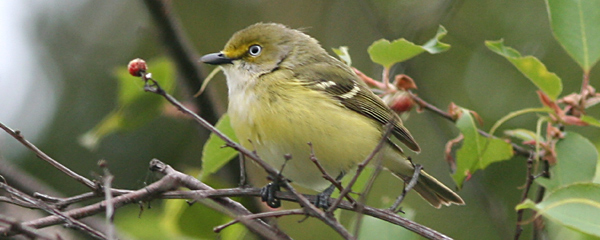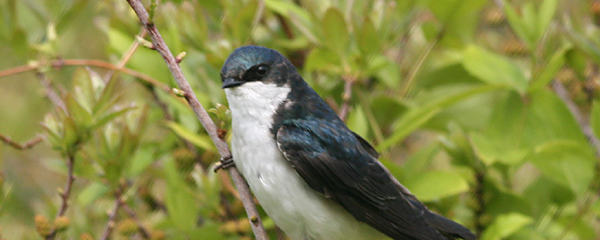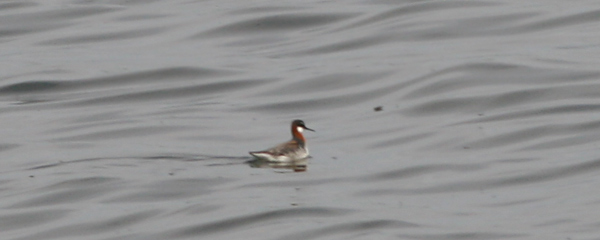The second weekend of May 2008 was most auspicious for both mothers and birders. Mother’s Day may be the holiday this time of year is known for, celebrated by more countries on this weekend than any other, but while dutiful children in the United States as well as sundry nations from Anguilla to Zimbabwe showered their matriarchs with love and respect, bird watchers also had reason to celebrate. It seems that, just about everywhere in the world, birds are on the move, making this a most auspicious time to observe World Migratory Bird Day, which we do by observing migratory birds. Sign me up for that!

Clearly, this was going to be an impressive weekend in the New York metro area. After all, the eggheads (get it, eggheads…) in charge of scheduling birding activities deemed this date propitious for both the World Series of Birding in Cape May and the NYC Birdathon & City Birding Challenge. I eschewed both events for the familiar pleasures of Jamaica Bay Wildlife Refuge, intercepting Corey in the midst of his mass-transit Queens Big Day. We two were also joined by Carrie of Great Auk – or Greatest Auk? (question mark hers, not mine!) so the company was top-notch, but did the birding match?
Birding at Jamaica Bay was, as ever, sensational. Of course, I expected nothing less! We started our loop in the gardens to grab migratory songbirds like Black-and-white, Magnolia, Chestnut-sided, Black-throated Blue, Black-throated Green, Yellow, and Yellow-rumped Warblers along with abundant White-eyed Vireos. No rarities responded to our plaintive pishes so we moved on to more maritime fare, pulling stalwarts like Northern Harrier, Osprey, Glossy Ibis, Willets, Greater Yellowlegs, American Oystercatcher, and various peeps. As expected, we saw all the mimids (Brown Thrasher, Gray Catbird, and Northern Mockingbird), the usual summer gulls, wads of waders, swarms of swallows (mostly Tree), and grackles (Common and Boat-tailed) galore. Throw in various crows, terns, sparrows, and waterfowl and you’ve got a lovely little day list.

Still, on the second weekend of May, we don’t just expect a tremendous quantity and diversity of birds. We expect the unexpected… don’t know what it’s going to be, but it better be good! Our first unexpected encounter of the morning came as we were trying to motivate a Marsh Wren out of its shelter of reeds for Carrie. The wren resisted, as they typically do, but while we lingered, Corey heard what he thought was a Bobolink, a bird I’ve never associated with Jamaica Bay. Since a sighting did not materialize, he chalked the ID up to error. However, a little later, when we ran into a throng of people photographing an exquisite buff-pated bobo, I was forced to take back all (well, most) of the insults I’d hurled at him.
A bobolink in the outer boroughs is nice, but what really puts Jamaica Bay on the map are those errant shorebirds and pelagic species. One bird that represents a little bit of both is the remarkable Red-necked Phalarope located on the western edge of the West Pond. Now, coincidentally enough, I spotted my first Red-necked Phalarope right here in Jamaica Bay on the East Pond in August 2003. That bird, though mostly out of its breeding plumage and slipping into winter drab, had the local shorebird specialists in paroxysms of delight. The redneck we spotted swimming lazy circles this Saturday was at the peak of its plumage pulchritude. You can get a sense of how gorgeous it was in the photo below, even though it was excruciatingly far away!

It’s not every day, or even every year, you spot this sort of redneck in NYC limits. However, we couldn’t spend too much time ogling this tourist… rare warblers were reported in Forest Park, including a potential lifer for all three of us! Find out if we spotted it…



 New writers welcome – please contact us for details.
New writers welcome – please contact us for details.

















Great bird! Looks almost like a Wilson’s from the photo, but I can sort of make out a hint of a wing stripe there. My phalarope experience is pretty minimal.
you pair of show-offs…:))